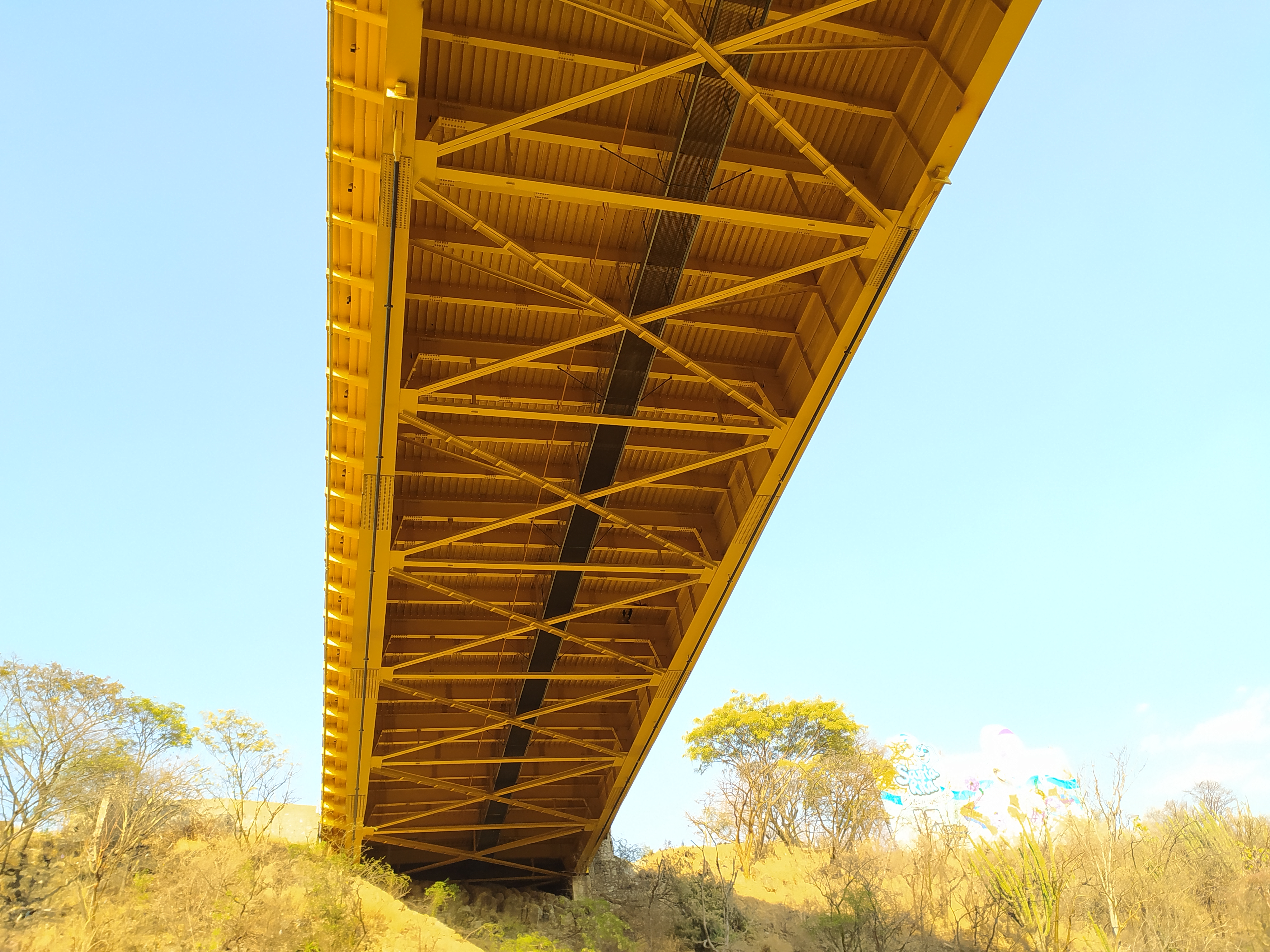This bridge crosses the deep ravine of the Santiago River and is known for being one of the tallest bridges in North America, with a height of 125 meters and a length of 206 meters. The bridge is part of the Guadalajara-Zapotlanejo highway and is a key structure that facilitates the connection between Guadalajara and Mexico City.
It is a steel portal bridge with an orthotropic metal deck. Therefore, it has a low mass and extremely low damping. Combined with the large size and speed of trucks on the route between Guadalajara and Mexico City, this creates a significant vibration problem that can cause fatigue failures in the steel structure.
The project includes an experimental and numerical study of the vibrations and the historically detected damages, as well as the design of vibration mitigation measures and reinforcements to comply with current regulations.
The most affected elements by vibrations are those of the secondary wind-bracing structure and the transverse elements, while the longitudinal beams are less susceptible. The dominant frequencies are relatively high, between 12 and 25 Hz.
The study allowed the determination of which types of vehicles produce the maximum accelerations (since trucks are measured and weighed at a nearby station) and the critical speeds.
The typical solution consisted of modifying how the wind-bracing structure is hung from the main structure, tying the former to the longitudinal beams instead of relying on the transverse ones. Other actions included the stiffening of the abutment braces, the renewal of the support devices, and changing the type of joint in the movable abutment by replacing a cantilevered comb joint with another having bi-supported teeth. The impact of vehicle axles on the joint was responsible for a significant portion of the vibrations.
Before the works, accelerometers were installed to record acceleration levels and the number of strong vibration episodes and compare them with the response after the works. The result is a significant reduction in movements in the most sensitive elements.
